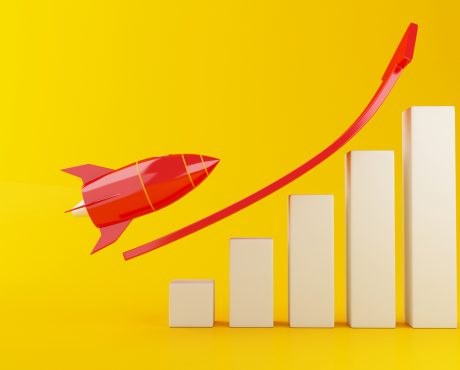This New Catalyst Could Spark Stock Market Mega-Rally
This mistake could cost you double-digit stock market profits in 2020.
The S&P 500 posted its best return in the month of June since 1938. And just last week, the Dow Jones Industrial Average hit a record high of 27,000 points.
But that doesn’t mean the rally is over. This new catalyst could send the stock market surging in the coming months. And if you stay on the sidelines today, you could leave huge gains on the table.
Let me show you why.
The Federal Reserve generally hikes interest rates when the stock market hits fresh all-time highs. But based on the latest smoke signals out of Washington, most experts expect the central bank to cut rates in the months ahead.
In March, I told readers the Federal Reserve would most likely begin cutting interest rates. I based that prediction on readings from the interest rate futures market. This indicator, which I dubbed “the bond market X-ray,” suggested a 23.3% chance of a rate cut at the beginning of 2020.
That call now looks like it will be right on the money. Last week, Fed Chairperson Jerome Powell hinted that he could begin lowering interest rates as early as this summer. The policy shift, he explained, came as a result of a slowing global economy and weaker-than-expected inflation. (Source: “Fed Chairman Jerome Powell strongly hints a rate cut is coming,” CNN, July 10, 2019.)
This represents a big change. At the start of the year, Powell seemed primed to continue hiking interest rates. Now he seems on the verge of a complete 180, setting the stage for the next rate cut cycle.
So why should this matter to investors?
When the Federal Reserve lowers interest rates, they print up billions of dollars out of thin air to bid up bond prices. And as this money floods through the banking system, it stimulates business activity.
This action also serves as a big boost for the stock market. The value of a company is basically the sum of its future profits discounted by the prevailing interest rate. So if interest rates drop, investors will pay more for the same businesses.
You can see this show up in the historical data. Since 1971, the Dow Jones Industrial Average has increased by an average of 17% in the 12 months following a first rate cut. For comparison, the index delivered an average annual return of only eight percent per year during that time.
But here’s where things get really interesting: stock market returns get even better when these rate cuts occur in a booming economy. In the 12 months following a first rate cut when the economy was not in a recession, the Dow went up an average of 24%.
Dow Returns Following Rate Cut, No Recession
| Months | Average Return | Win Ratio |
| 3 | 9.8% | 100% |
| 6 | 13.5% | 100% |
| 9 | 17.2% | 100% |
| 12 | 24.1% | 100% |
In essence, an interest rate cut during an economic expansion amounts to pouring rocket fuel on the stock market. Share prices benefit from both lower yields and improving corporate profits.
In short, investors have good reason to expect a stock market rally through the back half of 2019.
While the economy has slowed, we’re nowhere close to a recession. And based on the historical data, that could spell outsized returns going forward.
